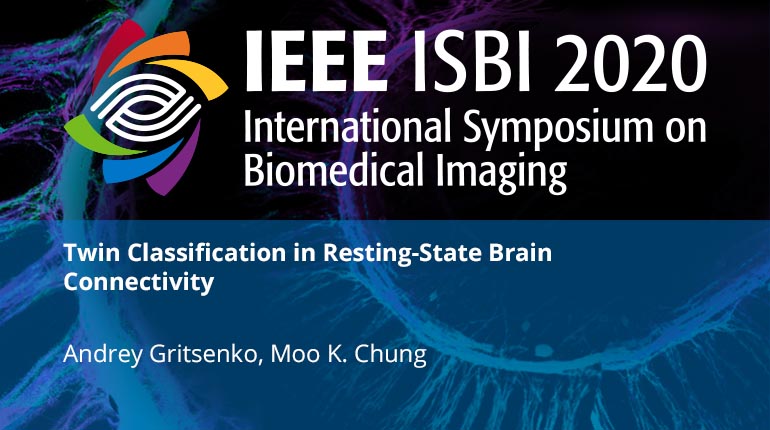
Already purchased this program?
Login to View
This video program is a part of the Premium package:
Twin Classification in Resting-State Brain Connectivity
- IEEE MemberUS $11.00
- Society MemberUS $0.00
- IEEE Student MemberUS $11.00
- Non-IEEE MemberUS $15.00
Twin Classification in Resting-State Brain Connectivity
Twin study is one of the major parts of human brain research that reveals the importance of environmental and genetic influences on different aspects of brain behavior and disorders. Accurate characterization of identical and fraternal twins allows us to inference on the genetic influence in a population. In this paper, we propose a novel pairwise classification pipeline to identify the zygosity of twin pairs using the resting state functional magnetic resonance images (rs-fMRI). The new feature representation is utilized to efficiently construct brain network for each subject. Specifically, we project the fMRI signal to a set of cosine series basis and use the projection coefficients as the compact and discriminative feature representation of noisy fMRI. The pairwise relation is encoded by a set of twinwise correlations between functional brain networks across brain regions. We further employ hill climbing variable selection to identify the most genetically affected brain regions. The proposed framework has been applied to 208 twin pairs in Human Connectome Project (HCP) and we achieved 92.23(?4.43)% classification accuracy.
Twin study is one of the major parts of human brain research that reveals the importance of environmental and genetic influences on different aspects of brain behavior and disorders. Accurate characterization of identical and fraternal twins allows us to inference on the genetic influence in a population. In this paper, we propose a novel pairwise classification pipeline to identify the zygosity of twin pairs using the resting state functional magnetic resonance images (rs-fMRI). The new feature representation is utilized to efficiently construct brain network for each subject. Specifically, we project the fMRI signal to a set of cosine series basis and use the projection coefficients as the compact and discriminative feature representation of noisy fMRI. The pairwise relation is encoded by a set of twinwise correlations between functional brain networks across brain regions. We further employ hill climbing variable selection to identify the most genetically affected brain regions. The proposed framework has been applied to 208 twin pairs in Human Connectome Project (HCP) and we achieved 92.23(?4.43)% classification accuracy.
 Cart
Cart Create Account
Create Account Sign In
Sign In





